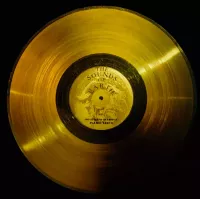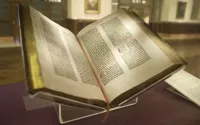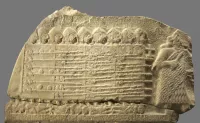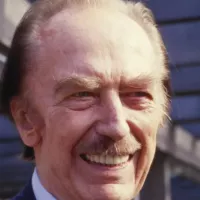Claude Debussy (1862-1918) was a highly influential French composer of the late 19th and early 20th centuries. While often labeled as an Impressionist composer, a term he disliked, his innovative approach to harmony and orchestration profoundly impacted modern music. Debussy's works are characterized by their evocative atmosphere, delicate textures, and unconventional harmonic language, marking a significant departure from traditional Romanticism.
1900: Focus and inspiration for Les Apaches
From around 1900 Debussy's music became a focus and inspiration for an informal group of innovative young artists, poets, critics, and musicians who began meeting in Paris. They called themselves Les Apaches
1901: Music critic of La Revue Blanche
For most of 1901, Debussy worked as a music critic of La Revue Blanche, adopting the pen name "Monsieur Croche".
1901: Sarabande from Pour le piano
In 1901, Debussy's Sarabande from Pour le piano showed that Debussy knew Satie's Trois Sarabandes at a time when only a personal friend of the composer could have known them.
January 1902: Rehearsals for Pelléas et Mélisande began
In January 1902, rehearsals began at the Opéra-Comique for the opening of Pelléas et Mélisande. Debussy attended rehearsals practically every day for three months.
April 1902: Premiere of Pelléas et Mélisande
On April 30, 1902, Pelléas et Mélisande premiered. Despite a divided audience, the opera quickly became a success, making Debussy well-known both in France and abroad.
1902: International fame with Pelléas et Mélisande
In 1902, Debussy achieved international fame with his only completed opera, Pelléas et Mélisande.
1902: Pelléas et Mélisande
Pelléas et Mélisande was composed from 1893 to 1902.
1903: La mer orchestral work
Between 1903 and 1905, Debussy created La mer, symphonic sketches.
1903: Wagner a beautiful sunset
In 1903, Debussy commented that Wagner was "a beautiful sunset that was mistaken for a dawn".
1903: Appointed Chevalier of the Légion d'honneur
In 1903, Debussy's stature was publicly recognized when he was appointed a Chevalier of the Légion d'honneur.
1903: Estampes for piano
In 1903, Estampes for piano gave impressions of exotic locations, with further echoes of the gamelan in its pentatonic structures.
1903: Republishing of Ariettes oubliées
In 1903, after Debussy had become well known, Ariettes oubliées, his Verlaine cycle, was successfully republished.
1903: Nocturnes for Orchestra
The Nocturnes for Orchestra were written in 1899, and La mer was written from 1903 to 1905.
July 1904: Debussy leaves his wife for Emma Bardac
On July 15, 1904, Debussy sent his wife Lilly to her parental home and left with Emma Bardac, staying incognito in Jersey and Normandy.
1904: Debussy plays piano accompaniment for Mary Garden recordings
In 1904, Debussy played the piano accompaniment for Mary Garden in recordings for the Compagnie française du Gramophone of four of his songs.
1904: Publication of the full orchestral score of Pelléas et Mélisande
In 1904, the full orchestral score of Debussy's opera Pelléas et Mélisande was published.
May 1905: Divorce of the Bardacs
In May 1905, the Bardacs divorced, leading Debussy and Emma to seek refuge in England.
October 1905: Premiere of La mer
In October 1905, La mer, Debussy's orchestral work, was premiered in Paris.
1905: Minstrels at Eastbourne
Debussy captured the frolics of minstrels at Eastbourne in 1905 in his pieces.
1905: Images
Images was created between 1905–1912. The former follows the tripartite form established in the Nocturnes and La mer, but differs in employing traditional British and French folk tunes, and in making the central movement, "Ibéria", far longer than the outer ones, and subdividing it into three parts, all inspired by scenes from Spanish life.
1905: La mer Published
In 1903-1905 Debussy composed his symphonic sketches, La mer.
1905: "Reflets dans l'eau"
In 1905 Debussy wrote the piano piece "Reflets dans l'eau", evocative of nature.
1907: Bartók encounters Debussy's music
In 1907, Bartók first encountered Debussy's music and later praised Debussy's service to music in reawakening awareness of harmony.
1908: Marriage to Emma Bardac
Debussy and Emma Bardac eventually married in 1908, their troubled union enduring for the rest of his life.
1908: "Golliwogg's Cakewalk" from Children's Corner
The piano piece "Golliwogg's Cakewalk", from the 1908 suite Children's Corner, contains a parody of music from the introduction to Tristan.
April 1909: Conducting in London
In April 1909, Debussy conducted Prélude à l'après-midi d'un faune and the Nocturnes at the Queen's Hall in London.
1909: First Book of Préludes
Debussy wrote the first book of Préludes during 1909–1910, which are short pieces that depict a wide range of subjects.
1909: The Little Nigar
In 1909, Debussy's interest in popular music was evidenced by piano pieces featuring rag-time, such as The Little Nigar.
1910: "Les Sons et les parfums tournent dans l'air du soir"
In 1910 Debussy wrote the piano piece "Les Sons et les parfums tournent dans l'air du soir", evocative of nature.
1910: "La Danse de Puck" Préludes for piano
In 1910, Debussy drew on Shakespeare for one of his Préludes for piano – "La Danse de Puck" (Book 1).
1910: Mahler Conducts Debussy in New York
In 1910, Gustav Mahler conducted the Nocturnes and Prélude à l'après-midi d'un faune in New York in successive months.
1911: Second Book of Préludes
Debussy wrote the second book of Préludes during 1911–1913, which are short pieces that depict a wide range of subjects.
1911: Debussy's pantheistic eulogy to Nature
In 1911, Debussy gave a pantheistic eulogy to Nature, in an interview with Henry Malherbe.
1911: Le Martyre de saint Sébastien
In 1911, Le Martyre de saint Sébastien was created, but was not a success. Debussy enlisted the help of André Caplet in orchestrating and arranging the score.
1911: Publication of Satie's Trois Sarabandes
Satie's Trois Sarabandes were published in 1911.
1912: Completion of Images
Debussy completed Images in 1905-1912, which is one of his orchestral works.
1912: Images
Images was created between 1905–1912. The former follows the tripartite form established in the Nocturnes and La mer, but differs in employing traditional British and French folk tunes, and in making the central movement, "Ibéria", far longer than the outer ones, and subdividing it into three parts, all inspired by scenes from Spanish life.
1912: Debussy's remark on Ariane et Barbe-bleue
In 1912, Debussy remarked to his publisher about the opera Ariane et Barbe-bleue by Paul Dukas, calling it a masterpiece but not a masterpiece of French music.
1912: Commissioned to create Jeux
In 1912, Sergei Diaghilev commissioned Debussy to create a new ballet score, Jeux.
March 1913: Premiere of Jeux
In March 1913, Diaghilev presented the first performance of Stravinsky's The Rite of Spring, a sensational event that monopolised discussion in musical circles, and effectively sidelined Jeux along with Fauré's Pénélope, which had opened a week before.
1913: "Brouillards"
In 1913 Debussy wrote the piano piece "Brouillards", evocative of nature.
1913: "Hommage à S. Pickwick Esq. P.P.M.P.C." Préludes for piano
In 1913, Debussy drew on Dickens for one of his Préludes for piano – "Hommage à S. Pickwick Esq. P.P.M.P.C." (Book 2).
1913: Debussy makes piano rolls for Welte-Mignon
In 1913, Debussy made a set of piano rolls for the Welte-Mignon company containing fourteen of his pieces.
1913: La boîte à joujoux
In 1913, the ballet La boîte à joujoux was created. It was left with the orchestration incomplete, and was completed by Charles Koechlin.
1914: Debussy started work on a set of six sonatas
In 1914 Debussy started work on a planned set of six sonatas for various instruments.
1914: Debussy supervises the editing of Chopin's music
In 1914 the publisher A. Durand & fils began publishing scholarly new editions of the works of major composers, and Debussy undertook the supervision of the editing of Chopin's music.
1915: Underwent a colostomy operation
In 1915 Debussy underwent one of the earliest colostomy operations.
1915: Debussy's Patriotic Musical Opinions
In 1915, Debussy expressed ardently patriotic sentiments in his musical opinions, complaining about the lack of a purely French tradition since Rameau and criticizing overblown orchestras and tortuous forms.
1915: En blanc et noir and sonatas
In 1915, En blanc et noir (In white and black), a three-movement work for two pianos, was created. Also in 1915 Debussy wrote the sonatas for cello and piano and for flute, viola and harp.
September 1917: Final concert
On 14 September 1917, Debussy gave his final concert before becoming bedridden in early 1918.
1917: Sonata for violin and piano
In 1917 Debussy completed his Sonata for violin and piano.
March 1918: Death of Debussy
Claude Debussy died of colon cancer on March 25, 1918, at his home, aged 55, during the First World War.
1918: Jean Cocteau criticizes Debussy's music
In 1918, Jean Cocteau, spokesman for Les Six, criticized the poetic, mystical quality of Debussy's music, alluding to the titles of pieces by Debussy.
1918: Became bedridden
In early 1918, Debussy became bedridden due to his declining health.
1919: Death of Claude-Emma
In 1919, Claude-Emma, Debussy's daughter, died in the diphtheria epidemic.
1920: Stravinsky's Symphonies of Wind Instruments
In 1920, Stravinsky's Symphonies of Wind Instruments was written as a memorial for Debussy.
1921: Janáček studies Debussy's work
In 1921, Debussy's use of whole-tone scales and his style of word-setting in Pelléas et Mélisande were studied by Leoš Janáček while he was writing his opera Káťa Kabanová.
1958: Rudolph Reti's Summary of Debussy's Music
Writing in 1958, the critic Rudolph Reti summarized six features of Debussy's music, which he asserted "established a new concept of tonality in European music".
1977: Cataloguing of Debussy's Works
In 1977, the musicologist François Lesure catalogued and indexed Debussy's works. This cataloguing led to the creation of the Lesure number (L number), which is often used as a suffix to Debussy's works in concert programs and recordings.
1983: Roy Howat's book contending Debussy's use of mathematical models
In 1983, the pianist and scholar Roy Howat published a book contending that certain of Debussy's works are proportioned using mathematical models, even while using an apparent classical structure such as sonata form.
1994: John Adams's version of four Baudelaire songs
In 1994, John Adams made an orchestration version of four of the Baudelaire songs.
1994: Simon Trezise's book on Debussy: La Mer
In his 1994 book Debussy: La Mer, Simon Trezise finds the intrinsic evidence of Debussy's use of the golden ratio "remarkable", with the caveat that no written or reported evidence suggests that Debussy deliberately sought such proportions.
2001: Colin Matthews orchestrates Préludes
In 2001, Colin Matthews began orchestrating both books of Debussy's Préludes.
2002: Robin Holloway's orchestration of En blanc et noir
In 2002, Robin Holloway made an orchestration of En blanc et noir.
2003: Revision of Debussy's Works Catalogue
In 2003, François Lesure's catalogue and index of Debussy's works, initially published in 1977, underwent a revision.
2004: Mark DeVoto's study on Debussy's early works
In a 2004 study, Mark DeVoto commented that Debussy's early works are harmonically no more adventurous than existing music by Fauré.
2006: Colin Matthews completes orchestrates Préludes
In 2006, Colin Matthews completed orchestrating both books of Debussy's Préludes.
2007: Margery Halford's book about Debussy's piano works
In a 2007 book about the piano works, Margery Halford observes that Two Arabesques (1888–1891) and "Rêverie" (1890) have "the fluidity and warmth of Debussy's later style" but are not harmonically innovative.
2012: Influence on Written on Skin
In 2012, the critic Rupert Christiansen detected the influence of Debussy's work in George Benjamin's opera Written on Skin.
2018: Centenary of Debussy's death
In 2018, to mark the centenary of Debussy's death, Warner Classics issued a 33-CD set that is claimed to include all the music Debussy wrote.
Mentioned in this timeline
France officially the French Republic is primarily located in Western...

Music is a cultural universal involving the arrangement of sound...

Books are a means of storing information as text or...

War is defined as an armed conflict involving the organized...

In Christianity a saint is a person recognized for exceptional...

A funeral is a ceremony for the final disposition of...
Trending
Dante Moore is an American college football quarterback currently playing for the Oregon Ducks He transferred to Oregon after previously...

8 months ago Spencer ejected for headbutting Sengun; Jackson-Davis shines in eventful NBA Playoffs game.

6 months ago Steven Adams secures a 3-year, $39M extension with the Houston Rockets.

2 months ago Reed Sheppard to come off bench for the Rockets in preseason game.

Adam Thielen is a professional American football wide receiver who most recently played for the Carolina Panthers He is known...

29 days ago Jake Paul to Fight Anthony Joshua on December 19: A Sensational Boxing Match
Popular

Candace Owens is an American conservative political commentator and author...

Ilhan Omar is an American politician currently serving as the...

XXXTentacion born Jahseh Dwayne Ricardo Onfroy was a controversial yet...

Frederick Christ Trump Sr - was an American real estate...

Charles James Charlie Kirk was a prominent American right-wing political...

Oprah Winfrey an American talk show host television producer actress...
